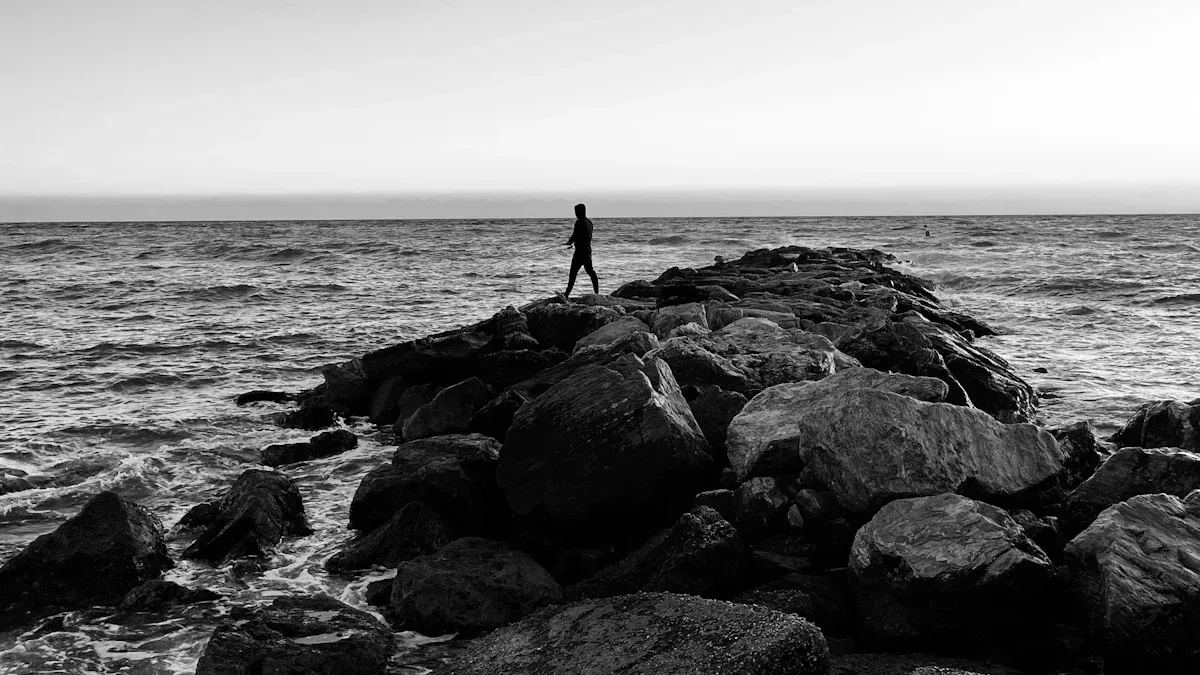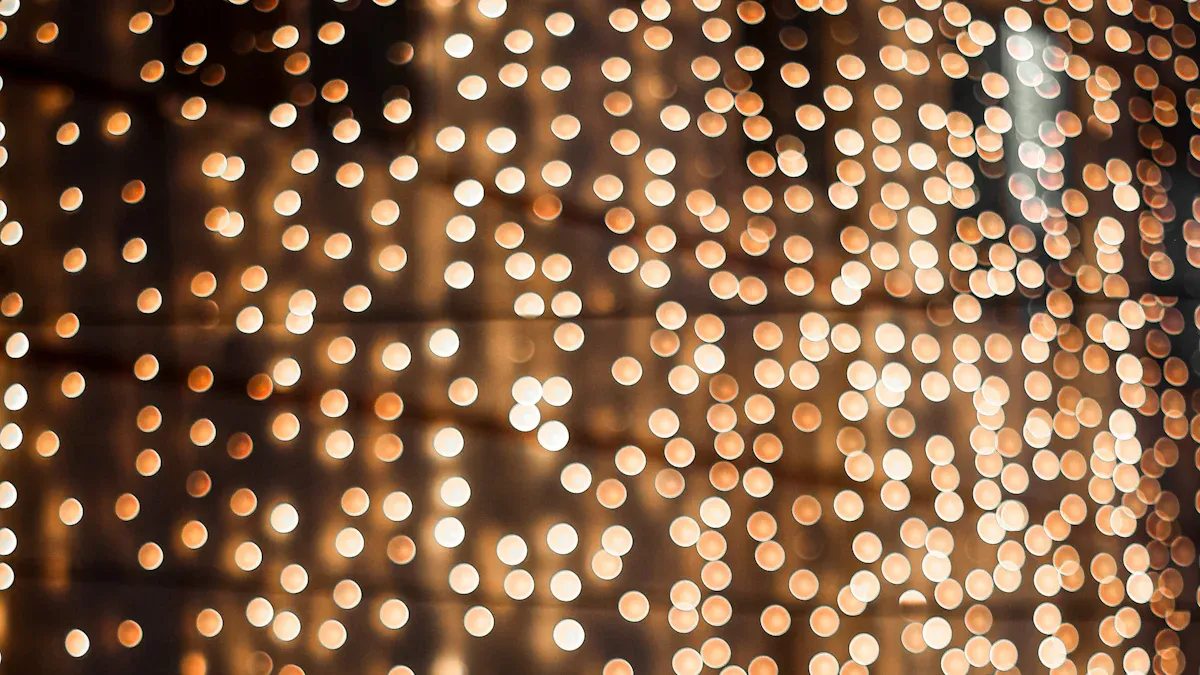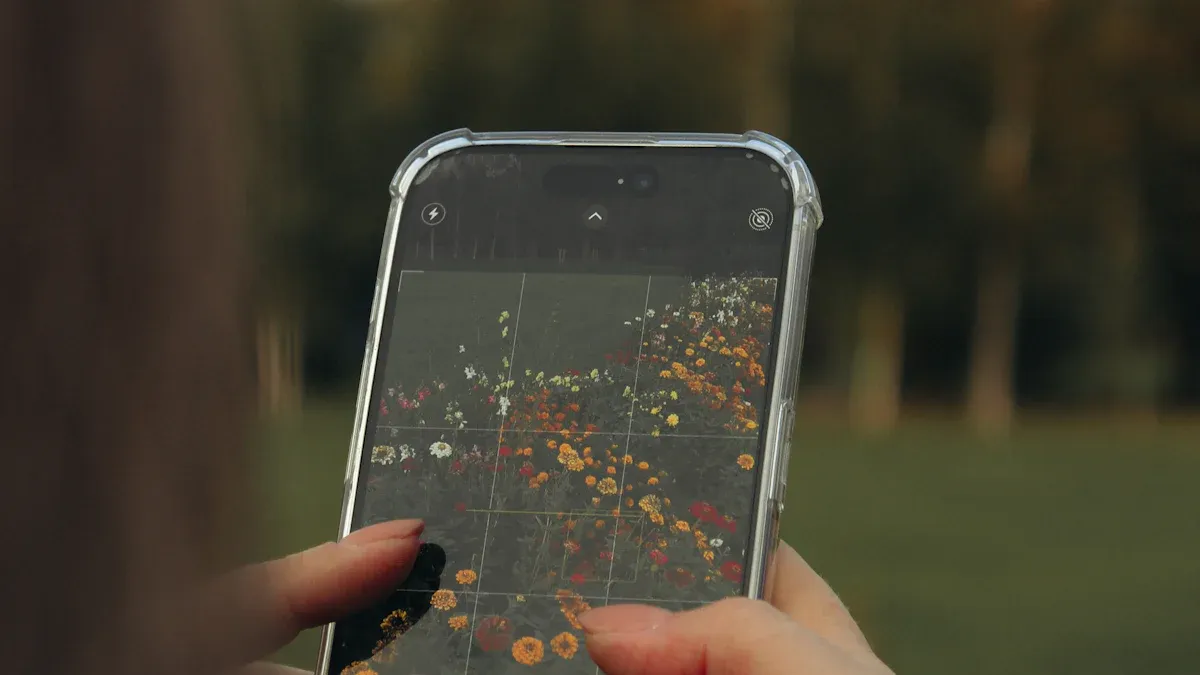Understanding Flashlight Colors for Optimal Use

Have you ever wondered why flashlights come in different colors? It’s not just for aesthetics. The color of light plays a big role in how well you see and how comfortable you feel during flashlight using. For instance, warm light is easier on your eyes, making it perfect for long tasks like reading or camping. On the other hand, cool light helps you spot distant objects, which is great for outdoor adventures or emergencies. If you’re in the market for a new flashlight or headlamp, understanding these differences can make all the difference in your experience.
Key Takeaways
Pick red light to keep your night vision. It’s great for looking at stars or reading maps in the dark.
Use green light for hunting or fishing. It helps you see animals without scaring them and improves sight.
Choose blue light for detective work. It shows stains and liquids that normal light can’t reveal.
Go with white light for daily activities. Its brightness is good for walking, fixing things, or finding your way during blackouts.
Try multi-color flashlights for more options. You can change colors to match what you need.
The Basics of Flashlight Colors

White Light and Its Characteristics
Understanding Color Temperature
When you think of white light, you might picture the bright beam from a flashlight. But did you know that white light comes in different shades? This is where color temperature comes into play. Measured in Kelvin, it determines whether the light appears warm or cool. Warm white light, around 2800 Kelvin, has a yellowish glow. It feels cozy and works well for indoor tasks. On the other hand, cool white light, typically around 5500 Kelvin, is brighter and crisper. It’s perfect for outdoor adventures or emergency situations where visibility is key.
Cool white light also enhances color contrast, making it easier to distinguish objects in low-light conditions. Whether you’re hiking at night or searching for something in the dark, this type of light ensures you see clearly.
CRI and Its Role in Color Accuracy
Have you ever noticed how some lights make colors look dull while others make them pop? That’s the magic of CRI, or color rendering index. It measures how accurately a light source reveals the true colors of objects. A flashlight with a high CRI, close to 100, mimics natural sunlight. This makes it ideal for tasks like medical work or photography, where color accuracy is crucial. Lower CRI lights, while still functional, might not show colors as vividly. So, if you need precise color recognition, pay attention to the CRI rating.
Overview of Colored Lights
Red, Blue, Green, and UV Light Explained
Colored lights aren’t just for fun—they serve specific purposes. Red light is gentle on your eyes and helps preserve night vision. It’s great for stargazing or reading maps in the dark. Blue light, often used in forensic work, highlights fluids and stains. Green light offers clarity without being harsh, making it a favorite for hunters and anglers. UV light, or ultraviolet, is a detective’s best friend. It reveals hidden stains, counterfeit items, and even certain minerals.
Differences Between Colored and White Light
So, why choose colored light over white? It all depends on your needs. White light is versatile and bright, making it suitable for most tasks. However, colored lights excel in specific situations. For example, red light minimizes eye strain in the dark, while blue light enhances contrast for tracking. Each color has its strengths, so understanding their uses can help you pick the right one for the job.
Practical Applications of Flashlight Colors

Red Light
Night Vision and Adaptation
Red light is a game-changer when it comes to preserving your night vision. Unlike white light, which can overwhelm your eyes in the dark, red light helps you see without disrupting your natural ability to adapt to low-light conditions. This makes it perfect for activities like stargazing or wildlife observation. Transitioning from darkness to red light is also much easier on your eyes, allowing for quicker adjustments when you need to turn on your flashlight. Plus, red light minimizes light pollution, which is great for maintaining the natural environment around you.
Here are some common uses of red light:
It’s widely used in military operations to preserve your night vision.
Astronomers rely on it to avoid local light pollution while observing the stars.
It’s essential in darkrooms for developing black-and-white film.
Uses in Astronomy and Camping
If you’re into astronomy, red light is your best friend. It lets you read star charts or adjust your telescope without ruining your night vision. Campers also love red light for its subtle glow, which won’t disturb others or attract insects. Whether you’re setting up a tent or navigating a trail, red light provides just enough illumination to get the job done without being too harsh.
Blue Light
Tracking and Forensic Applications
Blue light has unique properties that make it ideal for specific tasks. In forensic work, it’s used to detect fluids and stains that are invisible under regular light. Hunters and trackers also benefit from blue light because it enhances contrast, making it easier to follow trails or spot clues in the environment.
Benefits for Low-Light Tasks
Your eyes naturally become more sensitive to blue light in low-light conditions. This heightened perception improves visibility, making blue light a great choice for tasks like reading maps or navigating in dim settings. However, keep in mind that this increased sensitivity can sometimes cause glare, so it’s best to use blue light sparingly.
Green Light
Hunting and Fishing Advantages
Green light is a favorite among hunters and anglers for good reason. It’s less likely to startle animals, allowing you to observe wildlife without disturbing them. It’s also excellent for tracking wounded game, as it highlights blood trails and footprints without spooking your target. Green light provides clear visibility over long distances, making it easier to aim and track in low-light conditions.
Here’s why green light is so effective:
It doesn’t alarm hogs, enabling a stealthy approach.
It enhances contrast against backgrounds, improving tracking accuracy.
Its soft glow reduces shadows and glare, helping with precise aiming.
Clarity and Comfort for Reading
If you enjoy reading outdoors or in dimly lit spaces, green light offers a comfortable solution. It’s gentle on the eyes and provides enough clarity to read without straining. Whether you’re flipping through a book or checking a map, green light ensures you can see clearly without compromising your comfort.
UV Light
Detecting Stains and Counterfeit Items
UV light is like a secret weapon for uncovering hidden details. You might not see certain things under regular light, but UV light reveals them instantly. Here are some of its most common uses:
Counterfeit Detection: You can use UV flashlights to spot fake cash or verify documents and IDs.
Locating Pet Stains: If your pet has had an accident, UV light helps you find those hard-to-see stains for cleaning.
Auto Leak Detector: When paired with fluorescent dyes, UV light makes it easy to detect leaks in vehicles.
Bed Bug Detector: It highlights bed bug droppings or eggs, helping you identify infestations.
Checking for Hotel Cleanliness: A quick scan with UV light can show if hotel bedding is fresh or reused.
Antiques and Glass Authentication: UV light reveals cracks or repairs in antiques and glass items.
Mineral and Gemstone Observation: Some minerals glow under UV light, making identification easier.
Scorpion Hunting: Scorpions glow under UV light, so you can spot them at night without trouble.
Whether you're solving a mystery or just cleaning your home, UV light is a handy tool for many tasks.
Safety Tips for UV Light
While UV light is incredibly useful, you need to handle it carefully. Prolonged exposure can harm your skin and eyes. Always avoid looking directly into the beam. If you're using it for extended periods, wear protective glasses. Keep UV flashlights away from children to prevent accidental misuse. Remember, safety first when working with this powerful light source!
White Light
Everyday Versatility
White light is the go-to option for most tasks. Its brightness and clarity make it perfect for everyday use. Whether you're walking your dog at night, fixing something in a dimly lit space, or navigating during a power outage, white light gets the job done. It’s also great for indoor activities like reading or cooking. You’ll find it in most flashlights and headlamps because of its reliability and adaptability.
Choosing the Right Color Temperature
Not all white light is the same. Its color temperature can vary, affecting how it feels and performs. For cozy indoor settings, warm white light (around 2800 Kelvin) works best. It creates a soft, yellowish glow that’s easy on your eyes. For outdoor adventures or tasks requiring sharp visibility, cool white light (around 5500 Kelvin) is ideal. It’s brighter and crisper, helping you see details more clearly. Choosing the right color temperature ensures you get the most out of your flashlight or headlamp.
Tip: If you’re unsure which color temperature suits your needs, consider a flashlight with adjustable settings. This way, you can switch between warm and cool light depending on the situation.
How to Choose Headlamps and Flashlights for Daily Use
Identifying Your Needs
Indoor vs. Outdoor Activities
When deciding on a headlamp or flashlight, think about where you’ll use it most. Indoor activities like reading or fixing things in tight spaces often require softer light output and lower brightness levels. A headlamp with adjustable brightness is perfect for these tasks, as it lets you control the intensity based on your needs. For outdoor adventures, you’ll want something more robust. Look for a headlamp with a beam distance that can illuminate trails or campsites effectively. Outdoor use also demands durability, so choose a model that’s water-resistant and can handle impacts.
Here’s what to consider:
Brightness: A minimum of 350 lumens ensures effective illumination.
Durability: Water resistance and impact resistance are essential for reliability.
Battery life: Long battery life is crucial for extended outdoor use.
Specific Tasks like Reading or Navigation
Different tasks call for different features. If you’re reading, a headlamp with warm light output reduces eye strain. For navigation, especially in low-light conditions, a headlamp with a focused beam and adjustable brightness levels is ideal. It ensures you can see clearly without wasting battery power.
Matching Color to Activity
Best Colors for Outdoor Adventures
Outdoor activities like hiking, camping, or stargazing benefit from specific flashlight colors. Red light is excellent for preserving night vision, making it ideal for stargazing or wildlife observation. Green light attracts fewer insects, which is a lifesaver during nighttime fishing or hunting. For general outdoor use, white light provides the brightest illumination and is the most versatile option.
Ideal Colors for Safety and Emergencies
In emergencies, the right flashlight color can make a big difference. White light is the brightest and works well for search and rescue operations. Red light is perfect for low-light conditions, as it preserves night vision. Green light penetrates fog and smoke better, while blue light is useful for forensic tasks like identifying bodily fluids.
Flashlight Color | Effectiveness in Safety and Emergency Situations |
|---|---|
White | Brightest illumination, ideal for search and rescue. |
Red | Preserves night vision in low-light conditions. |
Green | Penetrates fog and smoke effectively. |
Blue | Highlights bodily fluids for forensic use. |
Multi-Color Flashlights and Headlamps
Benefits of Multi-Color Options
Multi-color headlamps and flashlights give you the flexibility to switch between colors based on your activity. Whether you need red light for stargazing, green light for hunting, or white light for general use, these tools have you covered. They’re especially useful for outdoor enthusiasts who engage in a variety of activities.
Tips for Effective Use
To get the most out of your multi-color headlamp, familiarize yourself with its settings. Use red light for nighttime tasks to preserve your night vision. Switch to green light when fishing or hunting to avoid attracting insects. For emergencies, rely on white light for maximum visibility. Always check the headlamp beam distance and battery life to ensure it meets your needs.
Tip: Keep spare batteries handy for extended trips. A headlamp with long battery life ensures you won’t be left in the dark when you need it most.
Choosing the right flashlight color can make a huge difference in your daily activities. Each color serves a unique purpose:
Red light preserves night vision, perfect for stargazing or astronomy.
Green light helps hunters track animals without startling them.
Blue light enhances underwater visibility, great for fishing or boating.
Yellow light cuts through fog, improving safety in poor weather.
Understanding flashlight colors not only boosts visibility but also reduces eye strain and enhances safety.
Take a moment to think about your needs. Whether you're camping, reading, or navigating in the dark, the right flashlight can make every task easier and more efficient.
FAQ
What flashlight color is best for preserving night vision?
Red light is your best option. It helps your eyes adjust to the dark without straining them. Plus, it’s perfect for activities like stargazing or navigating at night.
Tip: Use red light when you need to see in the dark without disturbing others around you.
Can I use one flashlight for multiple activities?
Yes! Multi-color flashlights are great for versatility. You can switch between red, green, blue, and white light depending on your needs. They’re perfect for outdoor enthusiasts or anyone who wants flexibility.
Why does color temperature matter in white light?
Color temperature affects how the light feels and performs. Warm white light (yellowish) is cozy and great for indoor tasks. Cool white light (bluish) is brighter and better for outdoor visibility.
Note: If you’re unsure, go for a flashlight with adjustable color temperature.
Is UV light safe to use?
UV light is safe if you use it responsibly. Avoid direct exposure to your skin or eyes. Always wear protective glasses when using UV light for extended periods.
What’s the most versatile flashlight color?
White light wins for versatility. It’s bright, clear, and works for almost any task. Whether you’re camping, fixing something, or dealing with an emergency, white light has you covered.
Emoji Tip: 🌟 Look for flashlights with adjustable brightness for even more flexibility!
See Also
A Complete Guide to Selecting Colorful Flashlights for Adventurers
Understanding Lumens: Your Complete Guide to Flashlight Brightness
Defining Tactical Flashlights: What You Need to Know
Exploring Stepless Dimming: A Key Feature in Flashlights
Exploring Various Flashlight Types: A Comprehensive Overview
